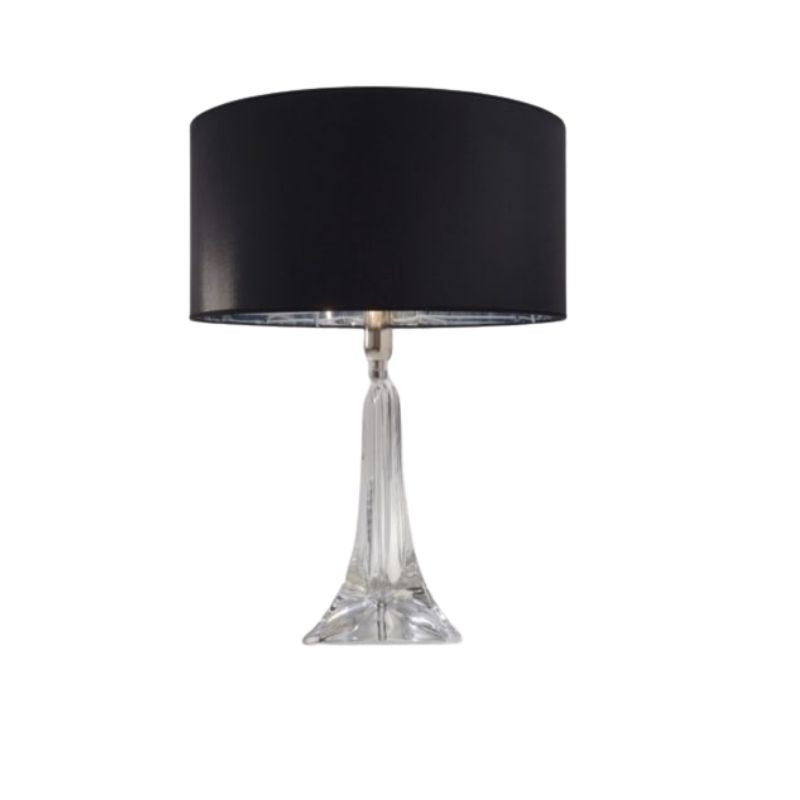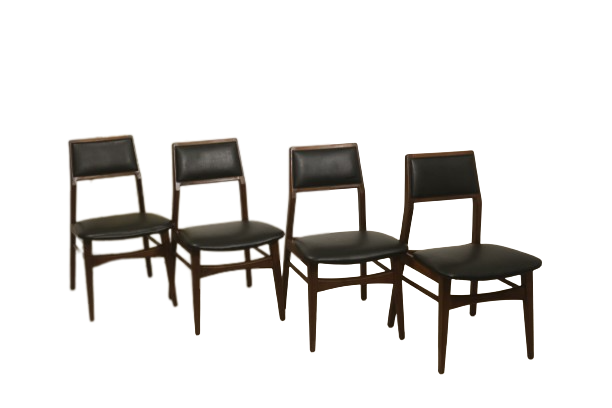OK. So I exaggerated.I love MCM. MCM was what I lusted for when I was younger and poorer and I live with a lot of MCM. But taste evolves and I am happy that it does. Case in point is that there is a lot of objectively wonderful and beautifully crafted Roccoco stuff that I would as soon chew my own leg off as has around me. I find some people rediscovering Art Deco. I see good American, Dutch, Italian stuff. What do you think is the next great thing? And this is not just to start a thread. I am genuinely curious. Where does it go from here?
It is interesting that you have framed this question as if we are all butterflies that go from one flower to another, moving along when we tire of the flower we are on. I am not sure that this analogy works.
And that said, you dont sound very convinced that there is another flower out there to take MCMs place.
As for myself, I faded a bit on MCM at one time in my life, many years ago. Then when the dust settled, I looked around at what else there was (and wasnt) in the world, both new and old. And somehow that was all it took for my interest in MCM to become even stronger.
I offer you "DEEP MCM" as one possible answer.
THERE IS NO EXIT.
Unless you want to start chewing off your own leg! I know.... everybody is different though.
But I can't start chewing just yet.
overtime, i realized that it is not about following the trend, it is about living the way i want to live - furnishing my home (a plain jane foursquare from 1912) with well made/crafted vintage stuff (mostly I found for nothing or discarded) that i like and find useful in the present time and not to recreate the past or specific period. i may be alone on this but somehow my breuer chair has no problem next to an over the top victorian/classical revival desk or the nakashima and mccobb chairs/tables with the shaker sideboard and noguchi paper lamps, the vintage braun small appliances rub elbows with other useful art deco fixtures and dansk or other similar scandanavian cookware in the kitchen. even the oversize framed verner panton fabric panel (and other vasarely serigraphs) looks fine above the craftsman/arts and crafts fireplace mantel. i was surprised to see that even the flashy colorful plastic kartell stuff looks cool around real american (late 17th and early 18th century) colonial mahogany/walnut pieces.
Hot? It was so hot here during the G-20 bats were falling out of the trees, dead. Last year it was the birds.
There was an article on Digg or something about what the trends are a little while ago, the kids (ie, under 30s) all want bespoke things or limited runs, craft beer and all that so perhaps thats where things are headed.
I have noticed on ebay that good things are much cheaper now, the older I get (white single male 38) I just want much less and better and when I do buy something its usually with the thought that it will last 15+ years or the rest of my life. Ideally in Jeromes house but thats not going to happen.
What goes around comes around ? "Modern" -- de Stijl, Bauhaus -- was meant to permanently alter the design landscape, and I'd argue that it did -- because it wasn't (isn't) a "style" as much as a movement, a reformation. It was meant to clear the slate, to start again at zero, in a way that Arts and Crafts, and Art Nouveau, could not do.
For this reason its inevitable spawn, postwar modernism (MCM), will continue to act as the default position, from which various iterations -- led, as always, by the architects -- such as Postmodern (now generally discredited, though don't hold your breath), Gehry/Hadid blobism (driven/enabled by the digital revolution), Japanese minimalism, etc etc, will continue to flow.
But even now, very nice examples of MCM architecture, and furniture, are being produced by designers young and old, around the globe. I don't expect it to retire any time soon -- though, again, don't hold your breath ?
The previous thread linked above is mostly devoted the rise and fall of MCM market interest and values. These are short-term indices, I'd say, not to be confused with the larger issues discussed here . . .
Movie set, Hollywood, 1934
minimoma: "real american (late 17th and early 18th century) colonial mahogany/walnut pieces."
Authentic american colonial pieces are very hard to find (the population in the US was miniscule until the end of the 18th century) so I am very curious what you have found that is this old? I have a strong interest in old handmade items that pre-date the industrial age. And I agree with Mark that I would love to see some snappies of your eclectic mix.
And Mark, I hope you didn't step backwards right after that snappie was taken. If you did, I think I know why your cat hasn't been showing up for dinner recently.
SDR #10. Thank god for your mind, but I disagree of course. At least in part. I wrote a long and tedius thing about the convergence of a number of unique factors after WWII that generated MCM - all true - but threw it away. Why bother with analysis when there is "deep MCM".
And to tktoo and to Aunt Marks 'ditto', I agree as well. Beauty will live, but beauty being in the eye of the beholder, it's current expression will change. Witness Spanky's wonderful reference to "Hollywood Regency". Consider the amount of extraordinary roccoco pieces of undeniable beauty and astonishing craftsmanship that moulder in cellars because no one can stand to have them in their living room. Still beautiful. Still in the cellar. Completely irrelevant. I maintain, beauty and craftsmanship are not sufficient for a style to remain in favor.
Deep MCM or deep pockets aside, I think that a "movement" like MCM as opposed to a trend like Hollywood Regency is rooted in the times, the materials available, the tools there are. Today we have LEDs, carbon fibre, 3D printers to make anything in any material. I think these factors will drive the new aesthetics.
Heh-heh. "Deep MCM" -- what is that, exactly ?
I guess we should distinguish between the surface and the underlying prinicple -- perhaps that's what you refer to. I don't suggest that designers of the future will continue to copy the form of the Egg Chair, or the Swan Chair, or the Womb Chair. That would be pointless -- though it could be argued that each new chair design in "pointless" when we already have so many good chairs. But that's never stopped the creators from making new ones . . .
The principle of functional minimalism, combined with a healty dash or dose of humanism and even wit, is what seems to characterize MCM design. As I mentioned, MCM is a direct descendent of Bauhaus design; it might be described as "Bauhaus in Technicolor," or some such. It acknowledges both Deco and Moderne, while politely leaving them behind as lacking directness of purpose. With variants originating on the Continent, Great Britain and Scandinavia and America, the princple saw full flowering. Any of that might have faded out of sight with time, and some of it did, surely -- yet so much remains vital, as is made clear by the number of copiers, and retailers of new and used MCM, and journalism like Dwell Magazine and, yes, Design Addict. MCM seems surprisingly alive and well, seventy years on.
For those who got bored early with MCM architecture and design, Postmodern seemed, briefly, to offer a way out. Nope -- didn't fly. Honest design seems to require something more -- or less ? Is the real meaning of MCM not the catalog of individual pieces but instead the underlying principle -- which seems to be so vital that it could and should survive indefinitely ?
Where do we disagree, ScanDesign ? What do you see in the future ? Will what we call MCM finally disappear, to be replaced by far-out form only possible with "The Technology" ? Check what's come from the minds of Gehry and Hadid -- their furniture pieces don't seem to have caught on as the "next thing."
We haven't seen furniture from Richard Rogers or Renzo Piano, as far as I know -- but I'd expect to like it more. What characterises their work ? Well, it's technically up-to-date yet it reflects the realities of our material palette, where the straight line and the plane continue to be the most practical and efficient ways to to make useful products from raw material. Another prinicple not to be ignored or left behind . . . ?
Maybe the thing with 3d printing and 5axis cnc is that it offers too much design freedom and hasn't found its 'natural' form yet, the globulor shapes or cell like networks that it can do might take some time to settle in for public acceptance. Or its like the early days of steel chairs that went through short expensive, experimental, theatrical and refined phases.
Changes and trends often have subtler drivers under the surface as sdr says, things like the sharing economy, mobile internet for everyone, work hours, family changes, kids staying at home longer, house size, energy costs might be the thing to look at to see where things are headed.
If you need any help, please contact us at – info@designaddict.com









